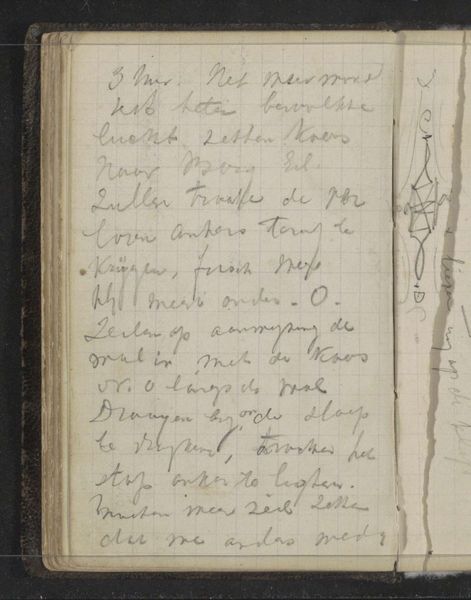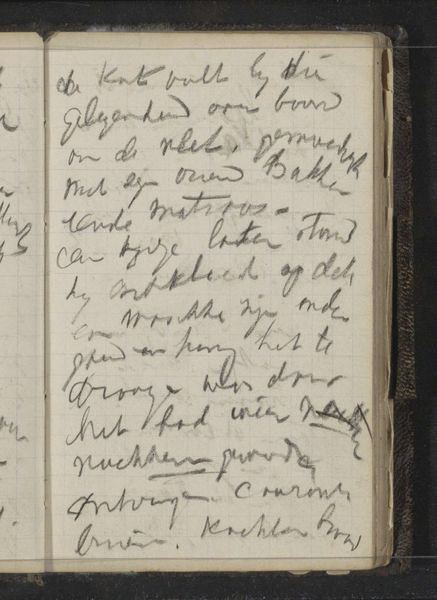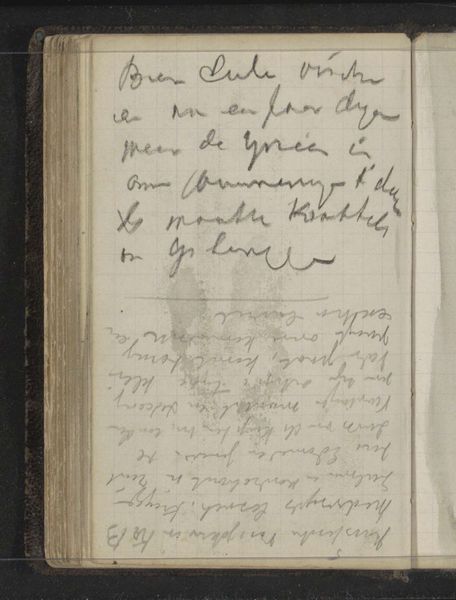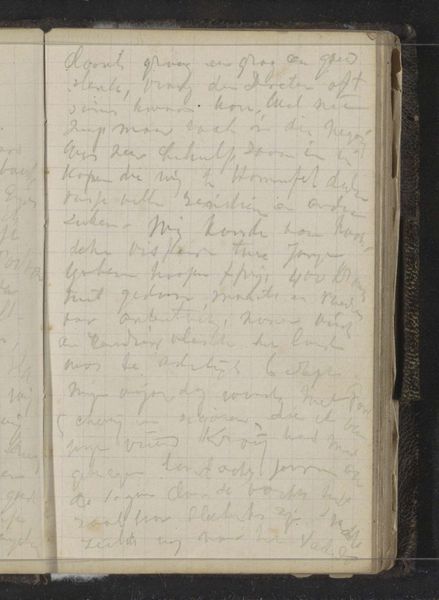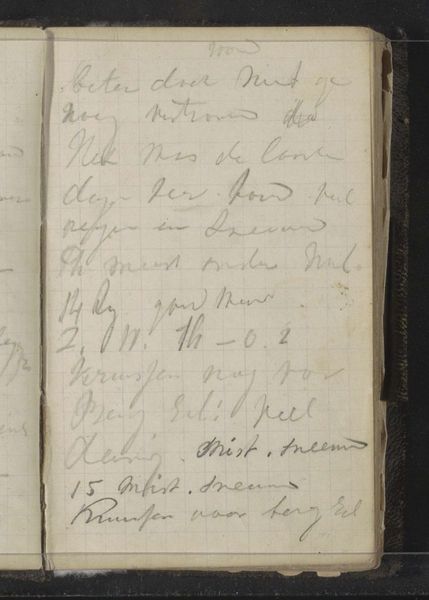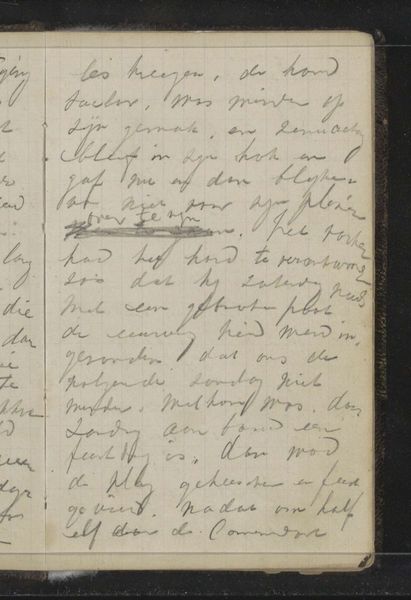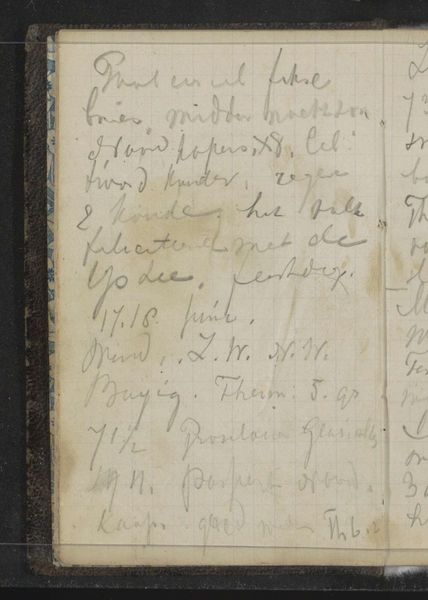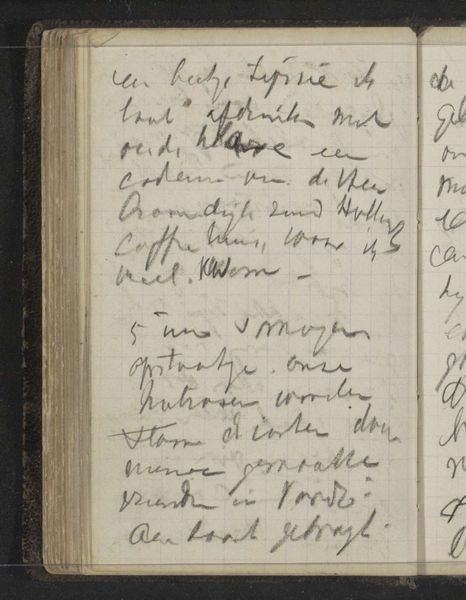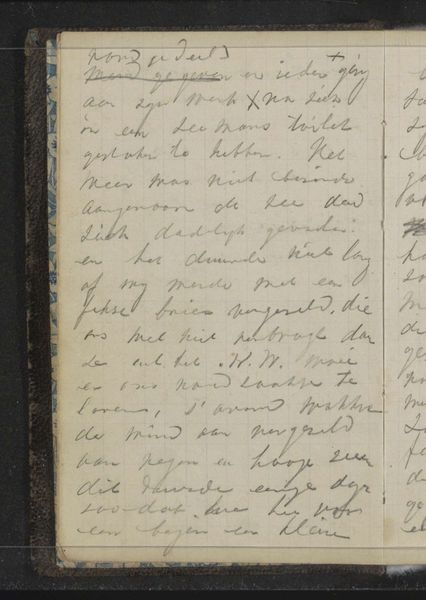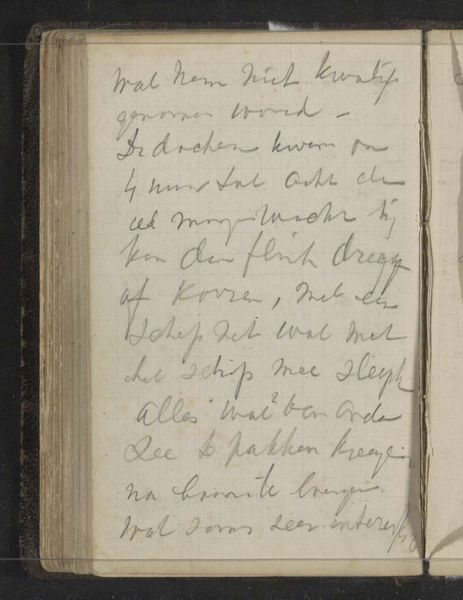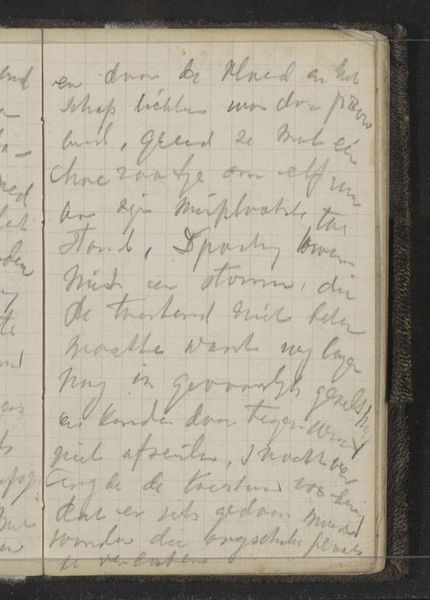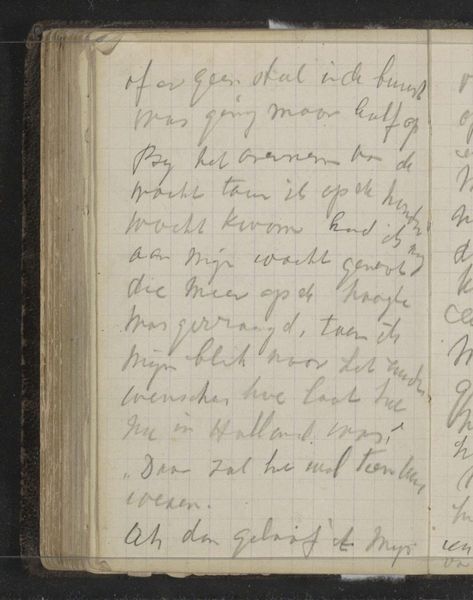
Copyright: Rijks Museum: Open Domain
Editor: So this is "Reisverslag," or "Travelogue," by Louis Apol, dating from around 1880 to 1887. It's a drawing made with colored pencil, ink, and watercolor on paper, currently held at the Rijksmuseum. It looks like a page from a personal sketchbook. What strikes you about this piece? Curator: Well, immediately, it draws me into thinking about the relationship between art, documentation, and the artist's own personal journey within a broader socio-political context. What purpose did sketchbooks serve in the late 19th century? Editor: That's interesting! I guess it was a way to capture moments, like a pre-photography Instagram feed? Curator: Exactly! But it's also a tool for observation and interpretation, particularly valuable when considering Romanticism. The use of colored pencils, inks and watercolour brings a sense of immediacy but how does this choice reflect Apol’s position as an artist engaged with representing and also constructing a particular kind of natural world? What kind of statement does Apol's choice of a relatively inexpensive medium suggest? Editor: It's interesting to think about it as more than just a pretty picture or a travel memory. Maybe it was a democratizing impulse? To make art accessible to wider audiences, or for himself? Curator: Precisely! By examining the materials and techniques within the social context, we uncover its cultural meaning and impact on the observer. Editor: I never thought about sketchbooks in such a critical light. Thanks for that new way of viewing this! Curator: Absolutely, it enriches our appreciation when we consider these items as both artworks, documents, and historical objects embedded in broader institutional networks.
Comments
No comments
Be the first to comment and join the conversation on the ultimate creative platform.
